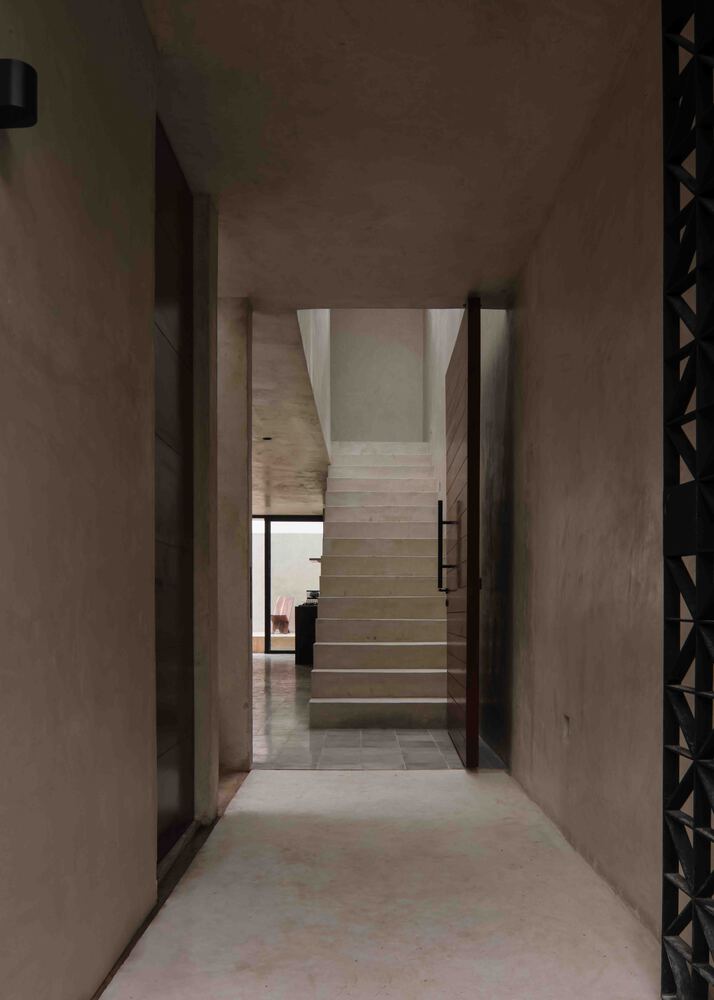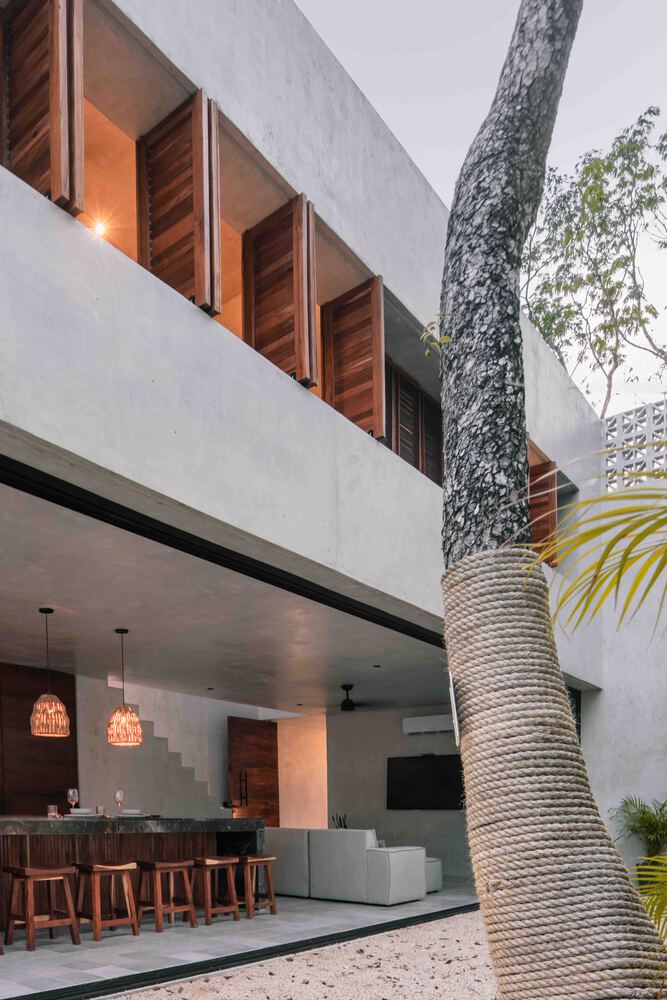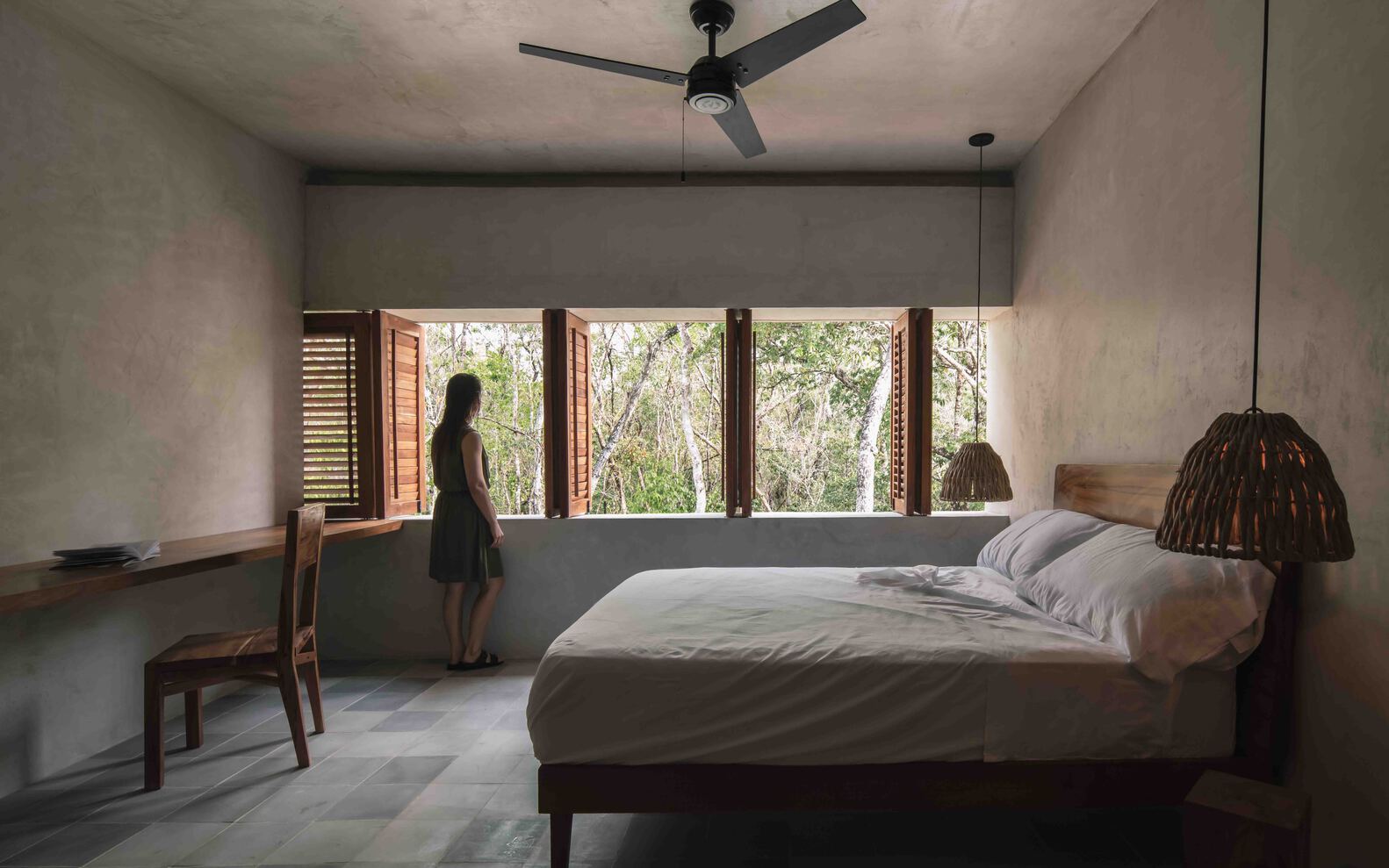
Coral House: A Concrete Habitat Built in the Jungle
The Coral House by Recoveco Taller de Arquitectura takes inspiration from one natural landscape and places into another. As the name implies, the residence is inspired by the form factor of coral reefs. It translates the coral’s characteristics with a building design that infuses the local, environmental, and practical context of the project.
Reef in the Jungle
“The concept of this house is born from the abstraction of the Coral as a refuge and habitat, incorporating a language that through cavities, nooks and crannies, and porosities lead us to inhabit a natural sculpture, a porous and monolithic structure in the middle of the jungle.”
– Recoveco Taller de Arquitecture

The Coral House’s massive concrete modules are formed around the existing jungle landscape, establishing an inherent connection between the built and natural spaces. Its polished volumes are deconstructed by intricate lattice work inspired by the pores found on coral. This take on biomimetic architecture builds a contrast of solidity and permeability. It creates a modern minimalist structure that filters natural light, provides privacy, and facilitates natural ventilation in a more organic-based manner.
The team behind the project placed heavy emphasis on sustainable design. Firstly, they formed synergy and compatibility between the structure and its vicinity. The decision to retain as much of the original terrain as possible reduced construction time. Additionally, the choice to only build up to two storeys allowed the structure to sit comfortably under the nearby trees’ canopy. Lastly, the use of materials readily available within the region and the employment of local artisans helped contribute to the community’s economy.
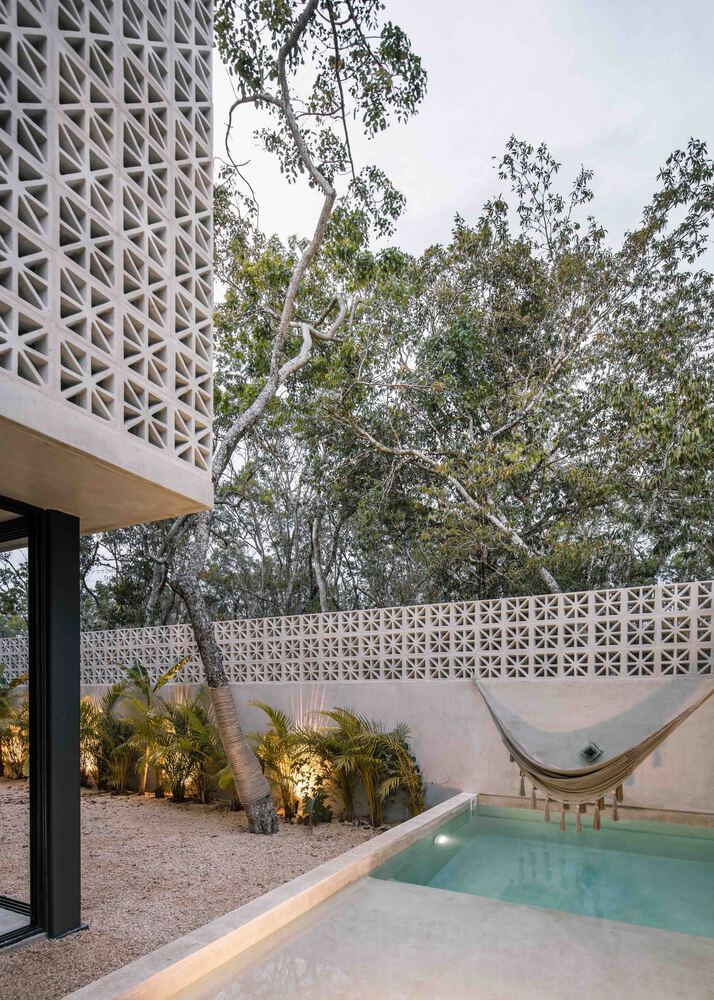
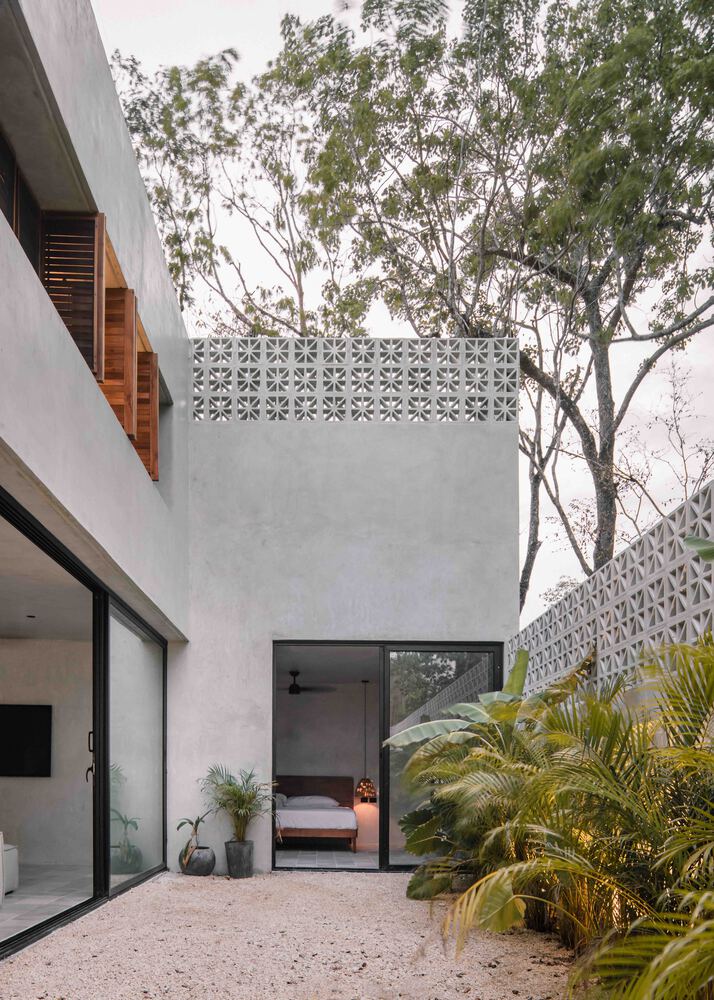
Design principles such as energy efficiency, resource conservation, and long-term resilience aligns the structure with environmental concerns. Passive strategies, whether it be in cooling or lighting, reduces energy consumption. On the other hand, the utilization of durable and low-maintenance materials increase the structure’s longevity in terms of appearance and use.
Read more: The Lost Lindenberg: A Surf Retreat With Ethereal Architecture
Carving into Stone
The consistent finish of polished gray cement creates a serene and cohesive atmosphere. Its minimal appearance creates a good backdrop for the wooden accents that introduce an opposing texture. Pasta floors, locally sourced and crafted by artisans, bring in cultural elements that relate the design to the region’s customs. Lastly, the variety of openings, whether it be casement windows, floor-to-ceiling glass, or breeze blocks, adds a dynamic filter of sunlight and views.
The interior layout of the Coral House is made of two volumes, as seen through the difference in axis, while also leaving space for nature to grow between them. The entrance hallway serves as a distributor, creating equal access between a bedroom, living room, or to the sculptural staircase. An intention to make visibility throughout the structure is apparent, based on the inward orientation of openings.
The ground floor features shared spaces such as open living areas, a kitchen, and dining space that is made adjacent to the outdoors. The upper level houses private bedrooms, bathrooms, and a contemplative terrace. A garden, pool, and veranda brins users closer to enjoy the jungle’s atmosphere.
Building with the Locality
The Coral House offers its own answer to designing within ecological sites, such as Tulum’s tropical jungle. It maintains a profound respect for the natural environment and is infused with an inspired take on biomimetic architecture. The design articulates the region’s built identity by incorporating local craftsmanship and materials. It’s a project that integrates natural and man-made contexts into a tropical home that offers its residents an immersive experience.
Read more: Amplifying Nature in the Built Environment: Evolution of Biophilic Aesthetics On The Rise?
Photos by Ariadna Polo
